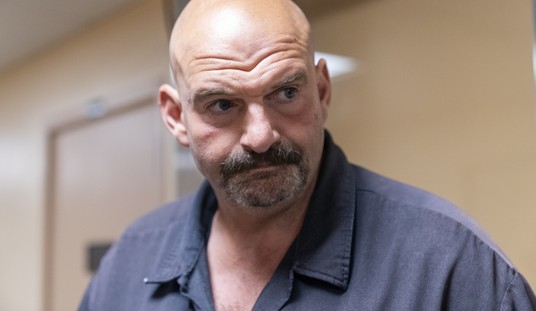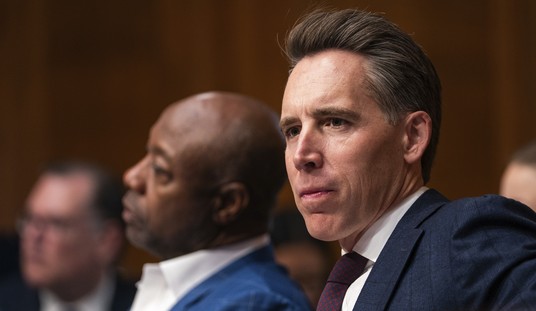Editor’s Note: See Ash Freeman’s wonderful article “Why Star Trek: The Next Generation Is Great in Spite of Being Mostly Terrible” and the previous installments in this series: Part 1: Tasha Yar, Part 2: Deanna Troi, Part 3: Beverly Crusher, and Part 4: Dr. Pulaski, Guinan, and Ensign Ro
Lwaxana Troi
Lwaxana’s place in Trek fandom is as polarizing as they come; her pushy, enthusiastic nature was incredibly off-putting to some, while others were endeared by it. Her flirtations with Picard, and other suitors of the week were hit or miss, but the real depth in Lwaxana’s character came when they started to peel back the layers behind her bombastic exterior.
Lwaxana’s life comes across as tragic once more of her back-story is revealed in the episode “Dark Page.” In it, we are shown the worst moment a parent could have in their lives: the loss of a child. Lwaxana suppressed all memory of her lost daughter Kestra, refusing to speak of or think of her ever again. This, combined with the loss of her husband Ian was too much for her to bear. Eventually the strain of this began to make her erratic, forcing Lwaxanna into a coma. She recovers by the end of the episode (because of course she does), but when viewed with this information in mind, many of her exploits before and after this episode become tinted in a more heartbreaking context.
Lwaxana fussing over daughter Deanna dragging her heels to get married is her compensating for the loss of her husband and her own way of wanting what’s best for her daughter, as is her stubbornness to lose potential suitor Timicin to his culture’s suicide ritual in the episode “Half a Life”. Lwaxana’s aggressive interactions with Picard are also potentially a result of this. “Cost of Living” has her doting over Worf’s son Alexander like a grandmother, as she likely wishes she had the opportunity to do with Kestra. Lwaxana became more three-dimensional, but only insofar as one was willing to empathize with her after considering this subtext.
These themes of marriage and parenthood would continue on in Star Trek: Deep Space Nine, but the question of how effective they were and how well her character was integrated with that cast and setting is for another day.
Alyssa Ogawa
Alyssa Ogawa is what some Trek fans jokingly refer to as a “Mauve Shirt.” Unlike the “Red Shirt,” which is basically a faceless nobody who’s all but guaranteed to die in order to kick off or advance the plot, Mauve Shirts are named recurring characters that give settings a sense of continuity and depth. They’re also ready made to kill in order to detonate a drama bomb should one be necessary, and killing off a main cast member is not an option. When that was too much, they could be put in enough danger to establish that sh*t just got real.
Alyssa was subject to pretty much all of that except death, parallel universes not withstanding. Fortunately, instead of merely being a familiar face, Ogawa was given hints of back-story every now and then, including a love interest and a brief pregnancy arc which ended with the birth of her child in Generations. Ogawa was not just a fine supporting character, but an excellent example of how to add depth to the setting with them. 
K’Ehleyr
K’Ehleyr is the anti-Worf, and it shows in her character. Where Worf is a full-blooded Klingon and staunch proponent of Klingon traditions and customs, K’Ehleyr is a half-Klingon, half-Human woman who couldn’t care less and is more influenced by her Terran heritage. This was an interesting setup for a character that would end up as yet another example of Women in Refrigerators (female characters who are killed for the sake of drama and motivating the men) in her second and final appearance.
Given what we had of K’Ehleyr during her short time on the show, a lot could have been done with her, such as developing her romance with Worf, her conflicts with him over decisions regarding how to raise Alexander, her place in maneuvering the minefield that is Federation and Klingon politics as a hybrid species humanoid from both sides. She could have provided many episodes with interesting back-story and perspectives that we don’t often hear in Trek. Instead of making Worf more interesting, K’Heleyr’s death means we get to see Worf become the worst father ever without her, and Alexander flounder as a Klingon warrior in his attempt to escape from the shadow of his father’s neglect.
Wow, Worf is kind of a jerk, huh? Oh well…

Sonya Gomez
Remember Sonya Gomez? Probably not, but you might remember the new officer that came aboard the Enterprise in Season 2 who spilled hot chocolate all over Captain Picard in Engineering. That’s Sonya.
Sonya seemed like she was going to be a major player in the show’s supporting cast, appearing in two consecutive episodes, and then vanishing without a trace thereafter, like a Chief Engineer in Season 1. Lycia Naff, the woman who played Gomez says that her character was originally meant to be a love interest for Geordi, and encourage him to seek a means to see without his VISOR. For whatever reason, the producers decided to dump this sub-plot abruptly, though rumor has it she was difficult on set and this may have been the reason that her character was dropped.
Oddly, yet vaguely related, Naff would go on to play the infamous 3-breasted hooker in Total Recall, multiple breasts being a feature the show had considered for Deanna Troi, but rejected.
Weird.










Join the conversation as a VIP Member